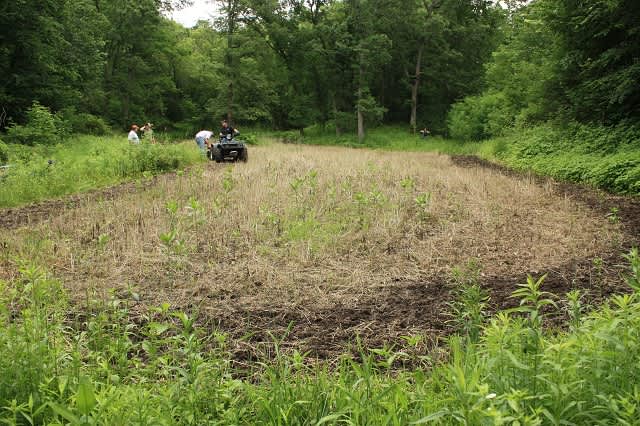Evolving Your Habitat: Food Plot Construction Tips
Brandon Wikman 03.26.12

Wildlife food plots are a key part of building bigger and healthier animals. Whether you are planting chicory, alfalfa, clover, or perhaps turnips, you must know that a plant must have an assortment of resources to reach its maximum growth peak.
A seed must have proper soil, fertilization, minerals, pH levels, and an adequate amount of sunlight in order to thrive to its full potential. If you happen to lack in any particular area mentioned above, you are not only cheating the groceries in your food plot, but also short changin’ your consumers – deer, turkey, and other wildlife.
 Plants must have the essential ingredients in order to provide your wildlife the best nutrition available. Otherwise, you are simply wasting your time. Whitetail deer digest the plant matter in order to grow larger racks and beef up their bone structure. Food plots that lack in any specific category will hinder your plant’s natural growth cycle and provide inadequate nutrition to the animals digesting it.
Plants must have the essential ingredients in order to provide your wildlife the best nutrition available. Otherwise, you are simply wasting your time. Whitetail deer digest the plant matter in order to grow larger racks and beef up their bone structure. Food plots that lack in any specific category will hinder your plant’s natural growth cycle and provide inadequate nutrition to the animals digesting it.
A food plot must have a sufficient amount of sunlight to survive. However, too much is actually not a good thing. If your plot experiences more than 6 hours of harsh sunlight, it is apt to grow thirsty and dry. Shade or a tree canopy becomes an unsung hero in this case.
Soil testing is one of the most important steps before spreading any seed onto the ground. You must figure out your property’s pH level to uncover your nutrient deficiencies. After you acquire your pH level, you may want to spread lime and fertilizer to increase the maximum potential of the seed’s growth.
Another critical asset you must understand is the size of your food plot. An important step before planting your food plot is deciding how large it should be. The average plot most outdoorsmen allocate to wildlife may range anywhere from ¼ acre to ½ acre. In most cases, size matters, however size does not comply in this case.
A strong and healthy ½ acre of groceries is a lot of great forage. In fact, it can produce up to two tons of forage in simply one year if you take the necessary steps in assuring your soil is up to par as well as your other variables.
 Evolved Harvest is one of the leading manufacturers of whitetail forage and nutrition. They offer premium mixtures of perennial and annual forage seeds to create a highly digestible food plot with the greatest possible protein and mineral content. The annual brassicas serve as a cover crop to protect the clovers and chicory until your perennial plot is established.
Evolved Harvest is one of the leading manufacturers of whitetail forage and nutrition. They offer premium mixtures of perennial and annual forage seeds to create a highly digestible food plot with the greatest possible protein and mineral content. The annual brassicas serve as a cover crop to protect the clovers and chicory until your perennial plot is established.
Large and expansive food plots will only increase cost, time, maintenance, and efforts without truly benefitting the deer herd in a way that is worth your while. As you also may realize, whopping food plots are extremely tricky to hunt considering all the space it occupies, which decreases your odds of getting into bow range of a buck.
These tips are a basic outline of what you need to know before, during, and after planting season. You may want to check out the Evolved Harvest virtual Planting Map that details what seeds work best in your region of the country here: store.evolved.com/home/products/harvest/harvest.aspx

